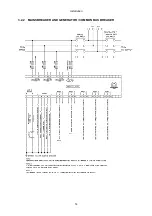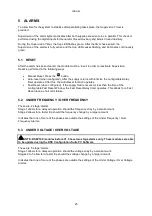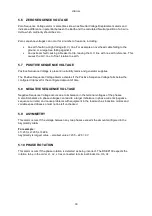
Alarms
28
5.5.6.3
EXAMPLE OF POTENTIAL TO NOT DETECT A MAINS FAILURE
In the below example, the local generator is providing a fixed power. When the load is low, this results
in power being exported to the grid. When the load is high, the generator supplies some power, the
mains provides the rest.
At times of high and low load, a mains failure results in either a change in frequency (detected by
R.O.C.O.F.) or a change in the supply vector (detected by Vector Shift).
During times where the load level is close to the level of power being provided by the generator, a
mains failure may not generate a frequency change or vector change large enough to surpass the trip
settings.
This will eventually lead to detection of a fault as the generator frequency/voltage will change in an
attempt to maintain the fixed power level. However a change large enough to be detected as a fault
may not occur for some time.
Generator output in
fixed export
Variable local
load
Time where a mains failure
may not be detected by
R.O.C.O.F. or Vector Shift















































